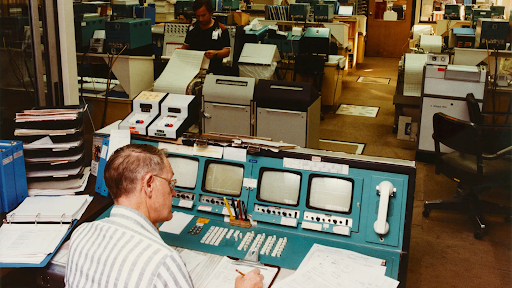19 August 2023. Ralph XE1RK recorded part of our QSO and played it back to me. Thanks Ralph!
I was running about 75 watts to a hex beam aimed Southwest.Serving the worldwide community of radio-electronic homebrewers. Providing blog support to the SolderSmoke podcast: http://soldersmoke.com
Podcasting since 2005! Listen to Latest SolderSmoke
Sunday, August 20, 2023
Saturday, August 19, 2023
Valveman -- The Story of Gerald Wells
Wednesday, August 16, 2023
Working Indonesia and Chile with new 15-10 Homebrew Transceiver
Tuesday, August 15, 2023
The Wizard of Kerala (India) -- Denny VU2DGR -- SDR and HDR
Monday, August 14, 2023
Tuesday, August 1, 2023
Voyager, Canopus, JPL, and 74xx Logic Chips from the early 1970s
"So somewhere out there in interstellar space beyond the boundary of the Solar System is a card frame full of 74 logic that’s been quietly keeping an eye on a star since the early 1970s, and the engineers from those far-off days at JPL are about to save the bacon of the current generation at NASA with their work. We hope that there are some old guys in Pasadena right now with a spring in their step."
https://hackaday.com/2023/07/31/just-how-is-voyager-2-going-to-sort-out-its-dish-then/
Sunday, July 30, 2023
Understanding Maxwell's Equations (video)
Friday, July 28, 2023
Phase Noise and the Radio Amateur
http://www.sherweng.com/documents/TermsExplainedSherwoodTableofReceiverPerformance-RevF.pdf
Phase Noise: Old radios (Collins, Drake, Hammarlund, National) used a VFO or PTO and crystal oscillators to tune the bands. Any noise in the local oscillator (LO) chain was minimal. When synthesized radios came along in the 70s, the LO had noise on it. It is caused by phase jitter in the circuit, and puts significant noise sidebands on the LO. This can mix with a strong signal outside the passband of the radio and put noise on top of the weak signal you are trying to copy. This is a significant problem in some cases: You have a neighboring ham close by, during Field Day when there are multiple transmitters at the same site, and certainly in a multi-multi contest station. You would like the number to be better that 130 dBc / Hz at 10 kHz. A non-synthesized radio, such as a Drake or Collins, has so little local oscillator noise the measurements were made closer-in between 2 and 5 kHz.
http://qrp-labs.com/qcxp/
------------------------------------
DC4KU appears to be using the crystal filter method used by Hans:
https://dc4ku.darc.de/Transmitter-Sideband-Noise_DC4KU.pdf
------------------------------------
Martien PA3AKE has done a lot of great work on this topic. See:
https://martein.home.
-----------------------------------
Sunday, July 23, 2023
First Contacts with 15-10 Rig -- Two Atlantic Crossings
I was just testing it, working (as usual at this stage) on final amplifier stability. Then I heard ON5WO calling CQ. I could not resist. I worked him, but had to use a test lead to manually key the .1 kW amplifier. Minutes later I worked OH6RM. He very diplomatically said that I had "highly unusual audio." This was probably due to earlier efforts to shift the carrier oscillator to improve carrier suppression. (I will fix this.)
I will continue to work on the rig; It should look a bit better when I am done. But hey, it works! It has already crossed the Atlantic. Twice!
Tuesday, July 18, 2023
"Onda Corta" ("Shortwave") -- A Short Film about Ham Radio in Venezuela (Please ID the Boatanchors!)
I have it cued up to 9:43 -- at that point Ramon is in his ham shack.









